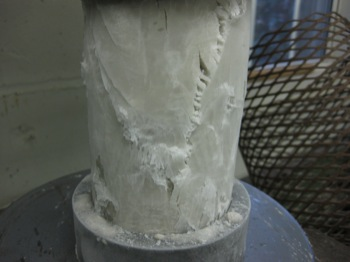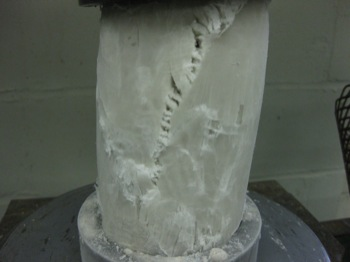Pykrete
I investigated the compressive strength of the ice and wood-pulp composite called Pykrete during the Fall of 2010 as part of a Mechanics of Solids course. I began by comparing the strength of Pykrete formulations made with either paper pulp (fine cellulose fibers) or saw dust, but quickly ran into problems with the additives settling out of suspension before the water froze. Inspired by the use of emulsifiers and viscosity-modifiers in modern cuisine, I experimented with varying concentrations of xanthan gum to keep the additives in suspension. Xanthan gum is used in cuisine to keep sauces emulsified and to keep spices in suspension. It has the interesting property that in solution, its viscosity decreases with an increase in shear force. Practically, this means the more you stir the solution, the lower the viscosity and the better the mixing. Additionally, the viscosity increases when the solution is stationary, trapping any additives in place. I was able to create and test several formulations of Pykrete that had ultimate strengths in range of 2000-4500 psi, comparable to those of common concretes which range from 2500 to 5000 psi.
A detailed technical report of my investigation can be found here.
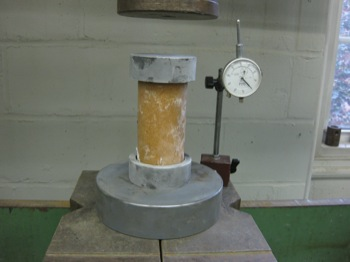
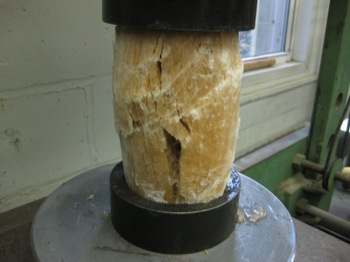
A sawdust formulation of Pykrete before and after loading to failure.
I froze samples in an industrial ice cream refrigerator that maintained temperatures around 0 degrees Fahrenheit. When transporting the samples, I kept them in a cooler packed with dry ice. Additionally, I cooled all testing fixtures that were to contact the samples before each test.
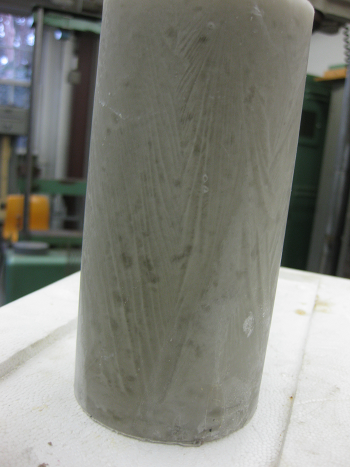
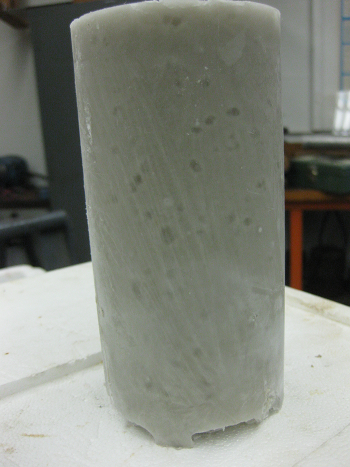
A paper dust formulation with large, feather-like ice crystals along its length. It's unclear whether macro-scale ice crystals affected structural performance.
